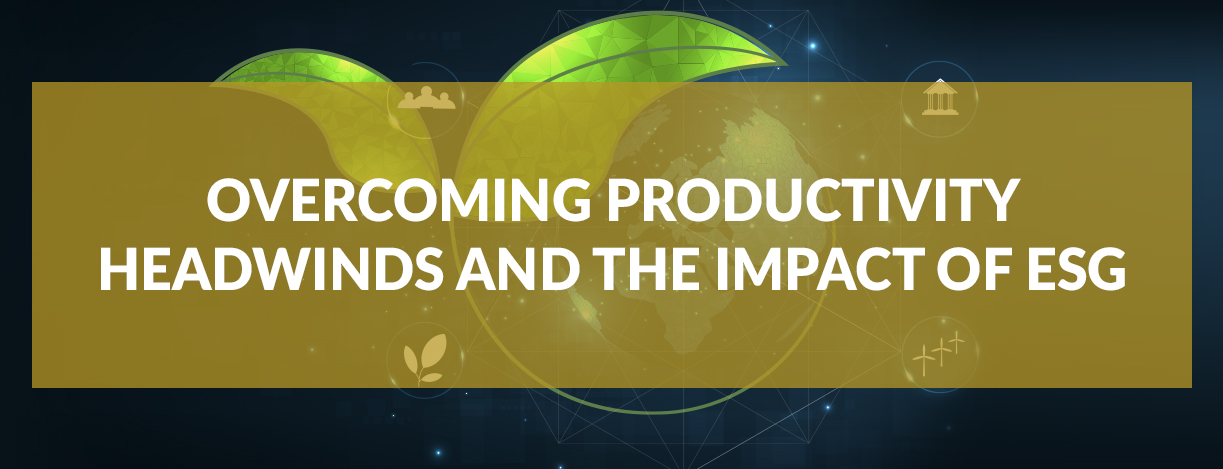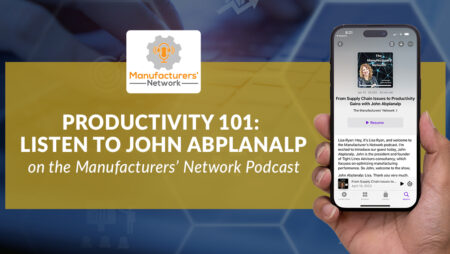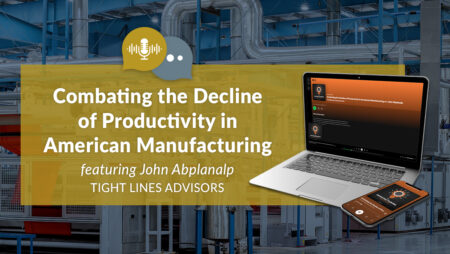
By John Abplanalp
Formulating an effective strategy for sustainable productivity is one of the greatest challenges facing today’s manufacturers. In fact, the numbers underscoring that challenge can be quite sobering. According to an August 9, 2022, Reuters report, “U.S. worker productivity in the second quarter fell at its steepest pace on an annual basis since 1948 when the Labor Department began tracking it, while growth in unit labor costs accelerated, suggesting strong wage pressures, will continue to help keep inflation elevated. Nonfarm productivity, which measures hourly output per worker, fell at a 2.5% pace from a year ago. It also declined sharply in the second quarter at a 4.6% annualized rate.”
Productivity growth not only remains below pre-pandemic levels as noted in the Labor Department’s 2022 Q2 report, but that decline first became evident even before the financial crisis. Further complicating the path to accelerated productivity has been the ascendancy of a framework for understanding and measuring how sustainably an organization is operating known as Environmental Social and Governance (ESG). In its early stages, ESG was referred to as a generic term used in capital markets and by investors to evaluate corporate behavior and to determine the projected fiscal performance abilities of a company. More recently, the acronym has expanded to incorporate a number of wide-ranging non-financial performance indicators.
Sustainability and ESG have a number of opposing forces. For instance, the culture of sustainability and ESG has resulted in the formation of what some characterize as “groupthink,” a mindset that is process-focused rather than outcome-focused and measured (the effectiveness of process). And in business everything is a process and every one can be measured by its accuracy/quality, time, and cost. As a result, the procedure narrows itself to diagnosing problems rather than continuing to a more complete, and beneficial outcome of offering scalable practical solutions. As a remedy to this potential drawback, an “inside-out approach” like that of The Performance Accelerator champions an unbundling of managerial and operational “territories.” This unification further expands the decision space of all internal stakeholders and recognizes contributions in recognizing issues, solving problems, instituting efficiencies, and driving economic efficiencies.
Under the “E” in ESG, operational efficiencies sought in a companywide improvement call for conformity with environmental goals and norms, which are often referred to by the term “circular economy.” The EPA describes the concept of a circular economy as one “…that uses a systems-focused approach and involves industrial processes and economic activities that are restorative or regenerative by design, enables resources used in such processes and activities to maintain their highest value for as long as possible, and aims for the elimination of waste through the superior design of materials, products, and systems (including business models).
Social criteria – the “S” in ESG looks at how a company treats people and places emphasis on employee relations, diversity, health and wellbeing, safety, and conflict resolution. This is another level of due diligence incorporated into the early phases of The Performance Accelerator, which identifies workforce participants and seeks stakeholder involvement and consensus to address the technological, operational, and social issues.
This growth is enabled through access to better information and the application of the knowledge across the expanded decision spaces in the workforce. Decision space is defined by how much authority for making decisions on different functions is delegated to people throughout the organizational hierarchy. As a result, firms with a valued and engaged workforce often tend to be selective in their hiring practices. Better able to attract and retain employees who share the organization’s core values, the benefits may be experienced in higher levels of efficiency and increased labor productivity.
Positive results and improved productivity based solely on the implementation of ESG are far from guaranteed. Companies that pursue a strategy of increasing “E” (environmental) and “S” (social) performance must be deliberate and vigilant. Reallocating labor and capital to the production of ESG outcomes have the potential to decrease the resources available for revenue producing capacity and activities, including improved total compensation for all employees. Fortunately, the initiatives and the calculable outcomes that are inherent in the five steps in the Tight Lines Performance Accelerator program maximize workforce productivity while reducing waste and inefficiencies as well as improving the bottom line and profitability.
Governance, the “G” in ESG predominately concerns itself with the leadership and managerial functions of the company. Beyond board structure and diversity, tax strategy, and executive compensation, governance also encompasses the implementation of strategic and tactical decisions that generate sustainable productivity and value creation. As part of The Performance Accelerator’s platform, an organization’s leaders are instrumental as the initiators of this transformational process as well as the champions of its enduring mission. They also perform additional duties as promoters of the process and advocates for all the people involved.
For all the projections and glowing assertions of ESG advocates, that you can do well and do good simultaneously, there is little if any hard evidence of substantive benefits. Recently commissioned studies by a number of prominent academic business schools are reporting that these predictions look to have been made through a pair of rose-colored glasses.
In my view, instituting the transformational, integrated approach of The Performance Accelerator combined with pragmatic inclusion of appropriate and relevant ESG principles can make for a prudent, forward-leaning plan of action. Purposefully applied, it will drive productivity and value creation while helping to temper the outside forces and existential challenges that today’s companies face.




